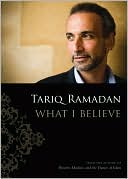Category Books
- Fiction Books & Literature
- Graphic Novels
- Horror
- Mystery & Crime
- Poetry
- Romance Books
- Science Fiction & Fantasy
- Thrillers
- Westerns
- Ages 0-2
- Ages 3-5
- Ages 6-8
- Ages 9-12
- Teens
- Children's Books
- African Americans
- Antiques & Collectibles
- Art, Architecture & Photography
- Bibles & Bible Studies
- Biography
- Business Books
- Christianity
- Computer Books & Technology Books
- Cookbooks, Food & Wine
- Crafts & Hobbies Books
- Education & Teaching
- Engineering
- Entertainment
- Foreign Languages
- Game Books
- Gay & Lesbian
- Health Books, Diet & Fitness Books
- History
- Home & Garden
- Humor Books
- Judaism & Judaica
- Law
- Medical Books
- New Age & Spirituality
- Nonfiction
- Parenting & Family
- Pets
- Philosophy
- Political Books & Current Events Books
- Psychology & Psychotherapy
- Reference
- Religion Books
- Science & Nature
- Self Improvement
- Sex & Relationships
- Social Sciences
- Sports & Adventure
- Study Guides & Test Prep
- Travel
- True Crime
- Weddings
- Women's Studies
What I Believe »

Authors: Tariq Ramadan
ISBN-13: 9780195387858, ISBN-10: 0195387856
Format: Hardcover
Publisher: Oxford University Press, USA
Date Published: October 2009
Edition: (Non-applicable)
Author Biography: Tariq Ramadan
Tariq Ramadan is Professor of Islamic Studies on the Faculty of Theology at Oxford University, Senior Research Fellow at St Antony's College (Oxford), Doshisha University (Kyoto, Japan), and the President of the think tank European Muslim Network (EMN) in Brussels. He is the author of Radical Reform: Islamic Ethics and Liberation, In the Footsteps of the Prophet: Lessons From the Life of Muhammad, Western Muslims and the Future of Islam, and Islam, the West, and Challenges of Modernity.
Book Synopsis
Tariq Ramadan is very much a public figure, named one of Time magazine's most important innovators of the twenty-first century. He is among the leading Islamic thinkers in the West, with a large following around the world. But he has also been a lightning rod for controversy. Indeed, in 2004, Ramadan was prevented from entering the U.S. by the Bush administration and despite two appeals, supported by organizations like the American Academy of Religion and the ACLU, he was barred from the country until spring of 2010, when Secretary of State Hillary Clinton finally lifted the ban.
In What I Believe, Ramadan attempts to set the record straight, laying out the basic ideas he stands for in clear and accessible prose. He describes the book as a work of clarification, directed at ordinary citizens, politicians, journalists, and others who are curious (or skeptical) about his positions. Aware that that he is dealing with emotional issues, Ramadan tries to get past the barriers of prejudice and misunderstanding to speak directly, from the heart, to his Muslim and non-Muslim readers alike. In particular, he calls on Western Muslims to escape the mental, social, cultural, and religious ghettos they have created for themselves and become full partners in the democratic societies in which they live. At the same time, he calls for the rest of us to recognize our Muslim neighbors as citizens with rights and responsibilities the same as ours. His vision is of a future in which a shared and confident pluralism becomes a reality at last.
Table of Contents
1. Introduction
2. The Early Years
3. A Muslim, and a "controversial intellectual"
4. Several fronts, two universes, one discourse
5. Interacting crises
6. Swift evolutions, silent revolutions
7. Multiple identities: first an American (a European, an Australian) or a Muslim?
8. Western Islam: religion and culture
9. "Cultural" Muslims, reformists, literalists, etc.
10. Advances
11. Challenges
12. The issue of women
13. The sense of belonging and the "post-integration" approach
14. Socio-political issues, the media
15. The roots of EuropeEL and of the West
16. Reform and the seven "Cs"
17. The West and its mirror: a new "We"
18. Criticisms and oppositions
19. Conclusion Appendix I: Thierry Appendix II: Manifesto for a new "WE"
Notes
Subjects
 Religious Biography
Religious Biography  Muslims - Biography
Muslims - BiographyBiography
 All Biography
All Biography  Religious Biography
Religious BiographyChristianity
 Islam
Islam  General & Miscellaneous Islam
General & Miscellaneous IslamChristianity
 Islam
Islam  Muslims - Biography
Muslims - BiographyChristianity
 Religious Biography
Religious Biography  Muslims - Biography
Muslims - BiographyChristianity
 All Religion
All Religion  Islam
IslamNonfiction
 Social Sciences
Social Sciences  Islamic Studies
Islamic StudiesReligion Books
 Islam
Islam  General & Miscellaneous Islam
General & Miscellaneous IslamReligion Books
 Islam
Islam  Muslims - Biography
Muslims - BiographyReligion Books
 Religious Biography
Religious Biography  Muslims - Biography
Muslims - BiographyReligion Books
 All Religion
All Religion  Islam
IslamScience & Nature
 Social Sciences
Social Sciences  Islamic Studies
Islamic StudiesSelf Improvement
 Personal Growth
Personal Growth  Success, Motivation & Self - Esteem
Success, Motivation & Self - EsteemSelf Improvement
 See All
See All  Self - Improvement
Self - ImprovementSocial Sciences
 Islamic Studies
Islamic Studies  Muslims - Biography
Muslims - BiographyChristianity
 Christianity
Christianity  Islam
IslamChristianity
 Christianity
Christianity  Religious Biography
Religious BiographyChristianity
 Christianity
Christianity  All Religion
All ReligionNonfiction
 Biography
Biography  Religious Biography
Religious BiographyNonfiction
 Biography
Biography  All Biography
All BiographyNonfiction
 Religion
Religion  Islam
IslamNonfiction
 Religion
Religion  Religious Biography
Religious BiographyNonfiction
 Religion
Religion  All Religion
All ReligionReligion Books
 Christianity
Christianity  Islam
IslamReligion Books
 Christianity
Christianity  Religious Biography
Religious BiographyReligion Books
 Christianity
Christianity  All Religion
All Religion
